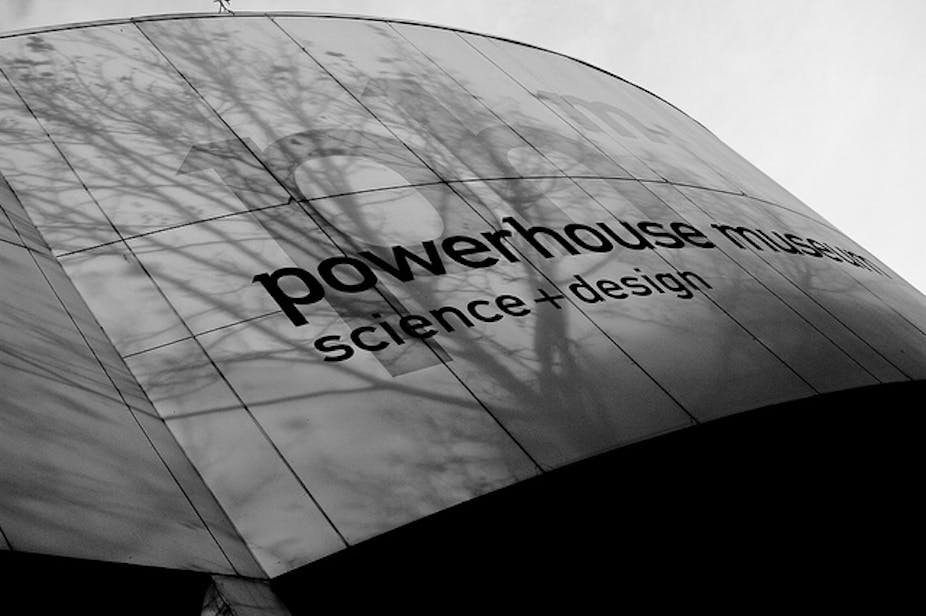Each year, Sydney’s Powerhouse Museum commissions one of Australia’s best design studios to create a poster and accompanying marketing material for the Sydney Design festival.
This year they went for a different approach. They put an online call out for entries to design a poster for the 2013 event, offering A$1000 for the winning entry.
Only a few days in, the competition was pulled, citing a disproportionately high number of “non-compliant, offensive and potentially damaging responses”.
Some of the more facetious entries have been archived here.
So what went wrong? Why did the creative community turn on the Powerhouse Museum for running, what was ostensibly, a poster competition with a cash prize and the opportunity to have your work plastered across Sydney?
One of the Museum’s first mistakes was allowing the entries to be anonymous, unmoderated and publicly viewable – creating a feedback loop and inspiring others to submit their own silly entries.
Then there was the money. The offer of $1000 to “create a concept that will be the masthead for our marketing campaigns for years to come” was seen as insulting to designers. This sort of job would normally attract a fee in the tens of thousands of dollars.
The Museum is careful to call it a “cash award” rather than a “fee”, but whichever way you look at it, $1000 to conceptualise the visual campaign for a significant design event, run by a major cultural institution, dramatically undervalues design.
Although the Museum says they “would have engaged the winning designer for further work and remuneration required to roll out the winning design,” this was not stated in the initial call out.
The problem of crowdsourcing
Increasing the prize money, though, would not have rid the process of all its flaws. What the Museum pitched as a competition looked to others like a request to design “on spec”.
Working “on spec” means without guarantee of payment, a practice widely condemned by the creative community along with “free pitching”, a term used to describe the supply of design services without payment.
It’s a practice that contravenes the Australian Graphic Design Association’s code of ethics.
The Museum attracted further ire by running the competition through crowdsourcing website, Creative Allies.
Sites like these allow clients to post a creative brief with an attached fee, which is then completed by designers who compete to “win” the job. The winner – the designer whose work best fits the clients’ needs – is paid the advertised fee. The unsuccessful designers are paid nothing.
The design community is split on the issues surrounding creative practice and crowdsourcing. Some designers argue that crowdsourcing provides a useful service when clients do not have the budget, nor see the value in paying more.
Many designers are more than happy for someone else to design a visual identity and website for $400. Others say that if you ask people to do work, you should pay for it.
But ask any design professional whether crowdsourcing is likely to produce quality visual communication strategies and you’re likely to get a resounding “no”. This is not designers being protectionist, but rather reflective of the importance of building a strong relationship between a client and a designer.
Commercial context
Running a competition is a strategy that the Powerhouse Museum has successfully used in the past to engage the wider creative community and as “a way of sourcing and generating new, innovative and exciting content”. The Museum points to two such examples: their international lace award, Love Lace and photographic competition, Trainspotting.
On the surface, the processes look the same: a callout for entries, cash prizes and an association with a prominent cultural institution.
The fundamental difference, however, is that by running the competition, the Museum pulled a substantial job – worth tens of thousands of dollars – out of the professional marketplace. The submissions to Love Lace and Trainspotting did not have a commercial context one year, and none the next.
I thought we were friends
At the heart of this issue is the design community’s feeling of being slighted by one of its own.
The Powerhouse Museum is NSW’s only publicly-funded institution with a mandate to challenge, yes, but also champion, nurture, and celebrate the design communities achievements and potential.
The Museum’s actions create the perception that they do not understand, respect or value the design community, which does not tally with their past record.
The Powerhouse Museum pulled the competition and now says it will “revert to the standard government process for graphic design commissioning.”
Never has a bureaucratic process sounded so reasonable.

